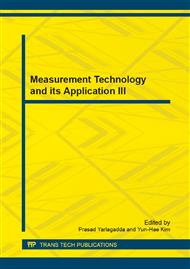p.508
p.514
p.519
p.523
p.528
p.533
p.537
p.542
p.546
Design and Implementation of Reconnaissance Monitoring System in Battlefield
Abstract:
Aim at intelligence requirements, a reconnaissance monitoring system in battlefield is designed. The basic unit of this system is sensor node which has functions of condition information monitoring and wireless communication. The node has a long reconnaissance and monitor to anthropogenic shock, acoustic, coordinate, temperature and humidity of surface, and so on, and access to analyze climate condition and enemy deployment, which provides commanders intelligences of battlefield.
Info:
Periodical:
Pages:
528-532
Citation:
Online since:
June 2014
Authors:
Keywords:
Price:
Сopyright:
© 2014 Trans Tech Publications Ltd. All Rights Reserved
Share:
Citation:


